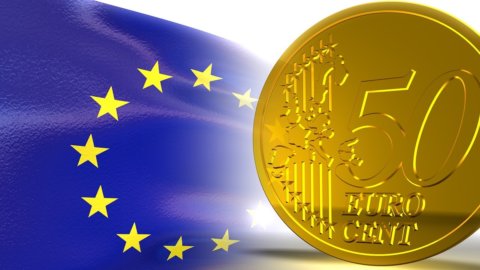From 1 January 2023, Croatia enter theeuro area and in space Schengen for free movement. For Croatia, this is the last step to be part of the "European club" to all intents and purposes. By joining Schengen, the same date it will adopt the euro, Croatia joins the other 26 EU and EEA members who all have passports and all other types of control at each other's borders. Although Croatian international airports will have a 3-month transition period to adjust their entry controls, but as of 26 March 2023 flights departing from the Schengen area arriving in Croatia will no longer be subject to passport control border.
A turning point for the country that 31 years ago declared independence from Yugoslavia. After last July the Council of the European Union approved the accession of the Balkan country, the economic and political unity between Veneto, Friuli, Istria, the Carnaro islands and Dalmatia broken in 1797 is thus restored: when Napoleon invaded Venice and then he gave it to Austria with the treaty of Campoformio. But let's see when the euro comes into force in Croatia and what will change.
Croatia adopts the euro: how much is 1 kuna worth?
The conversion rate between the euro and the Croatian kuna was set at 7,53450 kuna for 1 euro. The changeover will not take place immediately and a transition period is foreseen, until 14 January 2023, during which it will be possible to pay both in kuna and in euros. During the two weeks following the introduction of the euro, both the euro and the kuna can be used for payments.
Furthermore, double labeling of the prices of goods and services will be mandatory throughout 2023. “The exchange rate must appear clearly and visibly in the price indications, a key measure for consumer protection,” he explains Bankitalia, although many Croatian traders have already put it into practice these days.
Where can you exchange kunas for euros?
Starting from January and until 28 February 2023, the Bank of Italy will carry out the "exchange at parity value" of the Croatian kuna.
The exchange of banknotes in Croatian currency in favor of the general public will be carried out free of charge at the branches of Ancona, Milano, Roma, Trieste e Venezia for a maximum amount, agreed in the Eurosystem, of 8.000 kuna (HRK), corresponding to the equivalent of approximately 1.000 euro for each operation.
Institutional users with an account at the Bank of Italy will be able to present banknotes in Croatian currency at the Rome Centro Donato Menichella branch only for recognition of the relative countervalue.
Croatia adopts the euro: will prices increase?
Furthermore, continues Bankitalia, it is forbidden any price increase related to the changeover to the euro. If a company breaches this ban, consumers will be able to report any unjustified price increases to the authorities, who can impose a fine, as a consumer protection measure.
Croatia in the euro area: what do Croatians think?
Most of the Croatian population is favorable to joining the euro, especially for young people. According to the new generations, the single currency will bring more job opportunities and make travel easier and they do not believe that the euro could lead to higher inflation, as their parents fear. The euro is already used in Croatia by the largest companies and for the most important economic transactions.
To overcome the reluctance of the elderly towards the new currency, the government of Prime Minister Andrej Plenković has approved a law for raise pensions.
What will happen to the Croatian kuna?
The kuna was there currency official of Croatia for over 28 years. To date, the State Mint has produced one billion and 570 million banknotes. But what will happen to them when the euro is the official currency? They will have a new life: 500 million banknotes will be cut, while 5.200 tons will be melted down. Due to the impact on the environment caused by dyes and security elements, banknotes will no longer be burned, but will be cut into very small pieces, which will then be used as insulation in building materials. "It is an enormous mass of material - explained the Croatian Central Bank -: if all these banknotes that will be withdrawn could be sorted one above the other, the height of 50 kilometers would be reached, or rather like 6 Mount Everest".
Schedule for the replacement of kunas
- 1 January 2023: introduction of the euro. Euro banknotes and coins begin to circulate and kuna-denominated bank accounts are converted into euros. In order to facilitate the currency transition, both the kuna and the euro circulate and are accepted as payment for two weeks. Free exchange of kuna banknotes and coins into euros begins.
- 15 January 2023: euro banknotes and coins become the only ones to have legal tender status.
- 31 December 2023: deadline for exchanging kuna banknotes and coins at banks, post offices and financial agencies.
- 1 January 2024: Hrvatska narodna banka starts exchanging kuna banknotes and coins.
- 31 December 2025: Never Expires. Kuna banknotes can be exchanged indefinitely at Hrvatska narodna banka.
Which European countries do not have the euro?
Non-euro area member countries: Bulgaria, Czech Republic, Hungary, Poland, Romania, Sweden. Croatia is the 20th country to join the euro area.
Schengen area: which countries are not part of it?
Among the European nations that have decided to abolish internal borders there are also Romania e Bulgaria, whose application, however, was rejected due to the veto of Austria e Netherlands motivated by the risks of finding themselves with uncontrolled flows of migrants along the Balkan route and that expanding the area of free movement means more pressure on one's borders.





